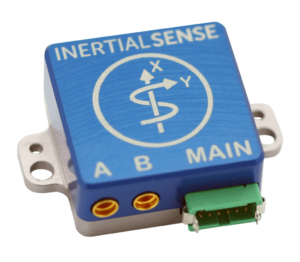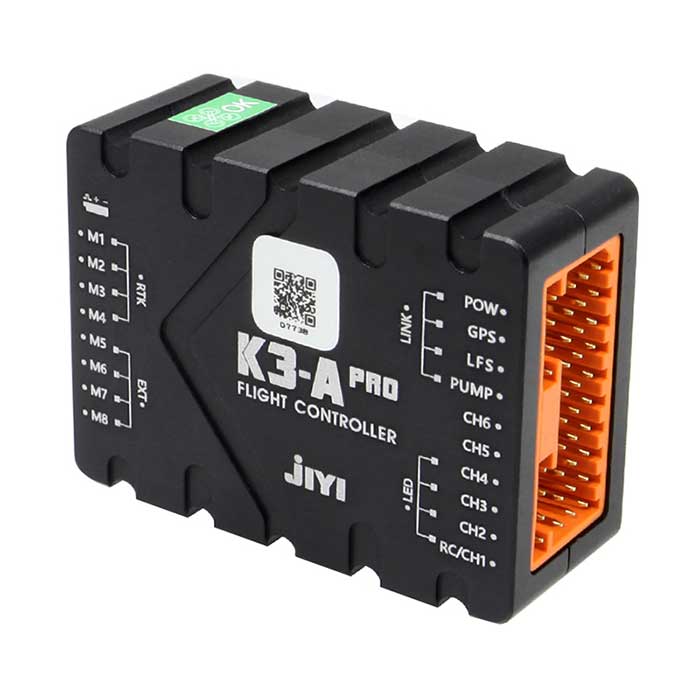SparkNavi Drone Flight Controller and GNSS/INS Made in Taiwan: Cutting-Edge Solutions for UAVs
SparkNavi Drone Flight Controller and GNSS/INS Made in Taiwan: Cutting-Edge Solutions for UAVs
Blog Article
The Relevance of Drone Trip Controllers in Modern Aerial Modern Technology: Trick Components and Their Effect
In the world of contemporary aerial technology, drone flight controllers serve as the pivotal systems that manage a drone's performance and capacities. These innovative units integrate necessary elements such as microcontrollers and GPS modules, promoting stability and accuracy in trip operations. Their function is especially noticable in self-governing features, where sophisticated algorithms enhance navigation and challenge avoidance. As industries increasingly rely upon drones for applications varying from agriculture to surveillance, the evolving technology within trip controllers elevates important inquiries about their future impact and prospective advancements. What advancements exist in advance that could redefine our understanding of drone abilities?

Introduction of Drone Flight Controllers
In the world of aerial modern technology, drone flight controllers work as the essential brain of unmanned airborne automobiles (UAVs), enabling accurate maneuverability and security during flight. These innovative systems integrate sensor information, processing algorithms, and control inputs, permitting drones to execute complicated flight patterns with precision.
Drone flight controllers utilize different sensing units, such as gyroscopes, accelerometers, and GPS modules, to evaluate the UAV's orientation and position in real-time. This details is important for maintaining balance and making certain safe operation in varied environmental problems. The controllers procedure this information to make instantaneous adjustments to the drone's motors, enabling smooth changes and receptive handling.
In addition, trip controllers are equipped with advanced software program that sustains functions such as waypoint navigation, challenge avoidance, and autonomous flight abilities. This software application is vital for both business and recreational applications, where dependability and accuracy are vital. As drone innovation remains to advancement, the evolution of flight controllers will play an essential role in boosting UAV functionality, safety and security, and adaptability, ultimately broadening their applications across numerous sectors.
Secret Elements Explained
Understanding the essential elements of drone flight controllers is vital for understanding exactly how these systems operate successfully. At the heart of a flight controller is the microcontroller, which functions as the mind, refining data from various sensing units and performing commands. Essential sensing units consist of accelerometers and gyroscopes, which measure the drone's positioning and motion, supplying important feedback for stabilization.
Another secret element is the measure, which determines altitude by measuring air pressure, while GPS components offer positional information, making it possible for autonomous navigating - SparkNavi drone flight controller and GNSS/INS made in taiwan. The flight controller likewise interfaces with Electronic Rate Controllers (ESCs), which control the rate of the drone's motors based upon the controller's commands
Communication components, such as radio receivers, assist in push-button control input, allowing operators to send commands in real-time. Additionally, some flight controllers incorporate software that can handle complex formulas for waypoint navigation, flight planning, and telemetry data analysis.
Duty in Flight Security
Central to maintaining flight stability, drone trip controllers make use of sophisticated formulas to refine sensing unit information and make real-time modifications. These controllers are furnished with a range of sensing units, including accelerometers, measures, and gyroscopes, which constantly monitor the drone's speed, alignment, and altitude. By interpreting this data, the flight controller can recognize discrepancies from the wanted trip path and react without delay to keep security.
As an example, if a drone experiences an unforeseen gust of wind, the flight controller can rapidly adjust the motor rates to counteract the disruption, making sure a stable trip trajectory. This ability is important not just for hands-on trip procedures yet additionally for executing complex maneuvers and preserving smooth trip in various ecological problems.
.jpg)
Additionally, the advanced algorithms used in flight controllers, such as go to this web-site PID (Proportional-Integral-Derivative) control, enable fine-tuning of the drone's response to changes in flight problems. By optimizing these control parameters, flight controllers can enhance stability, improve responsiveness, and decrease pilot workload. Inevitably, the duty of flight controllers in making sure flight stability is crucial for the effective and risk-free procedure of modern-day drones across diverse applications.
Influence on Autonomous Operations

Autonomous operations are specifically critical in varied applications such as shipment, surveillance, and farming solutions. With improved trip controllers, drones can autonomously navigate established courses, efficiently collect information, and adapt to vibrant settings. This capacity lowers the need for consistent human oversight, thus enhancing operational effectiveness and safety.
In addition, the implementation of artificial intelligence methods within trip controllers enables drones to improve their efficiency in time by gaining from previous objectives. This adaptability leads the method for much more sophisticated autonomous applications, such as throng technology, where numerous drones coordinate their actions to attain a common purpose.
Future Trends in Trip Controllers
Developments in flight controller modern technology are positioned to change drone capacities in the coming years. One considerable fad is the integration of expert system (AI) and machine knowing formulas, allowing drones to pick up from their environments and make real-time choices. This improvement will certainly improve autonomous navigating, obstacle avoidance, and objective preparation, considerably boosting functional performance and safety.
Furthermore, the advancement of sophisticated sensing unit technologies, such as LiDAR and multispectral imaging, will offer flight controllers with richer data inputs. This will help with a lot more advanced analytical capabilities, allowing drones to perform intricate jobs, such as precision search, rescue and agriculture, and infrastructure assessments with unmatched precision.
Another arising trend is the miniaturization of trip controller parts, which will lead to lighter and much more compact drones. This evolution will expand flight periods and haul capabilities, making drones much more functional for different applications.
Verdict
To conclude, drone trip controllers function as important parts in contemporary airborne innovation, guaranteeing security and accuracy in ability to move via the combination of microcontrollers, accelerometers, and GPS modules. SparkNavi drone flight controller and GNSS/INS made helpful site in taiwan. Their capability to enable self-governing procedures and adapt to different applications highlights their importance across several markets. As improvements in expert system and sensing unit innovation continue to emerge, the possibility for boosted abilities and improved operational efficiency in drone systems will likely improve the future of aerial applications
Central to maintaining trip security, drone trip controllers use advanced formulas to refine sensing unit data and make real-time adjustments. By interpreting this information, the trip controller can determine variances from the desired flight path and respond quickly to keep security.
In addition, the advanced algorithms utilized in flight controllers, such as PID (Proportional-Integral-Derivative) control, permit for fine-tuning of the drone's reaction to changes in flight conditions. Eventually, the duty of trip controllers in guaranteeing trip security is crucial for the risk-free and effective operation of modern drones throughout varied applications.
The developments in drone flight controllers not just enhance trip stability but additionally significantly affect self-governing procedures. SparkNavi drone flight controller and GNSS/INS made in Go Here taiwan.
Report this page